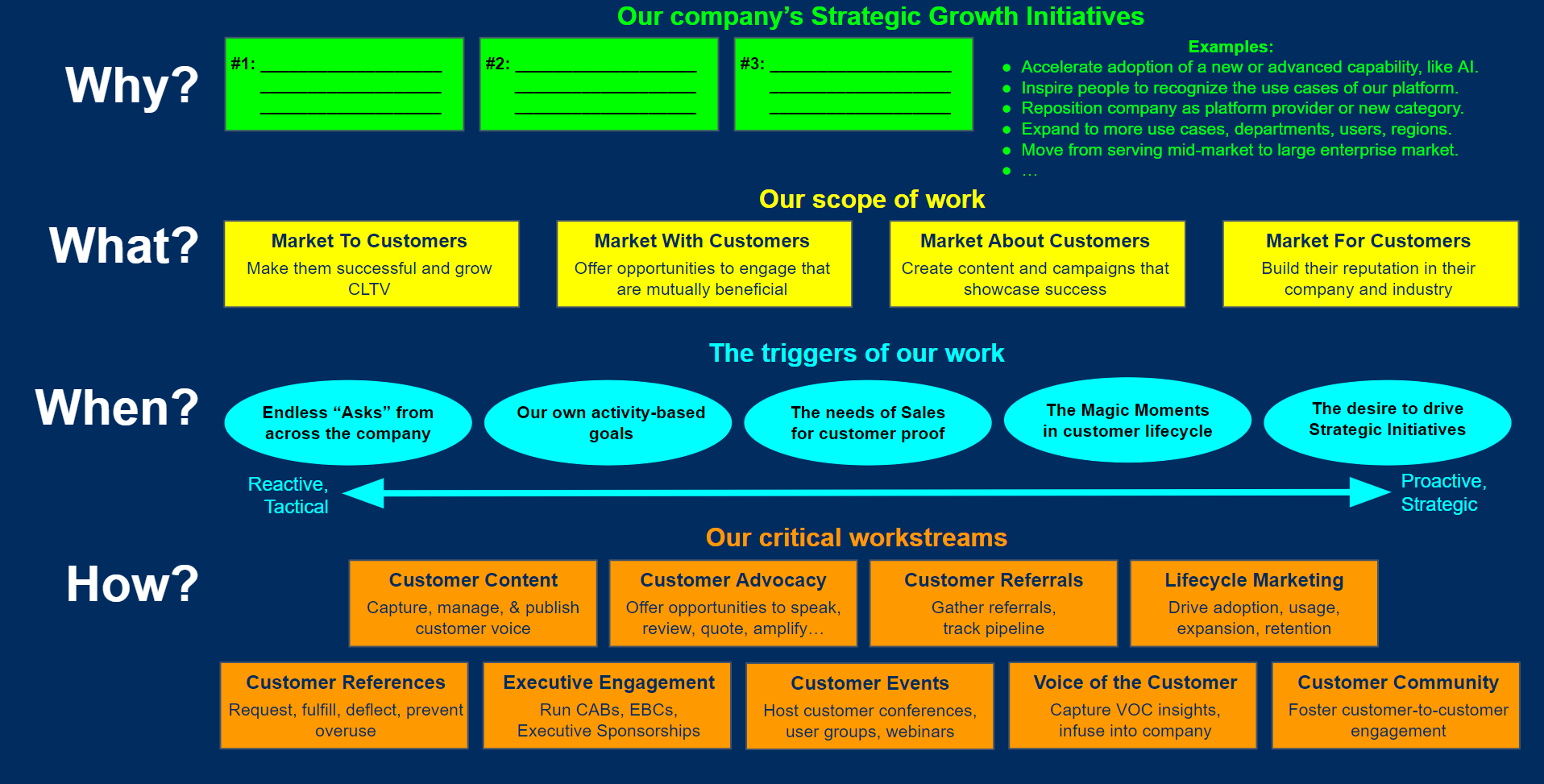The Why? Drive your company’s Strategic Growth Initiatives
Like my favorite business guru Simon Sinek says, when defining the new role of Customer Marketing, “Start with Why?”
If you’re not designing and executing Customer Marketing programs that explicitely accelerate the Strategic Growth Initiatives set you your C-level executives, then your C-level executives won’t care about your Customer Marketing programs, and you’ll constantly struggle for the 3 R’s: Respect, Recognition, and Resources.
Here’s what you need to do.
Find out what your company’s top 3 Strategic Growth Initiatives are. If you’re a public company, your CEO states these on your quarterly earnings calls. If you’re private, these are presented at your company’s all-hands meetings.
Then what?
Now you find out what the biggest obstacles are to achieving those SGIs. If you could wave your magic wand, what would you love customers to say about their experience working with your company that would overcome those obstacles. For more on this, read The Customer-Led Growth Manifesto, and consider doing The Customer-Led Growth Strategic Workshop.
